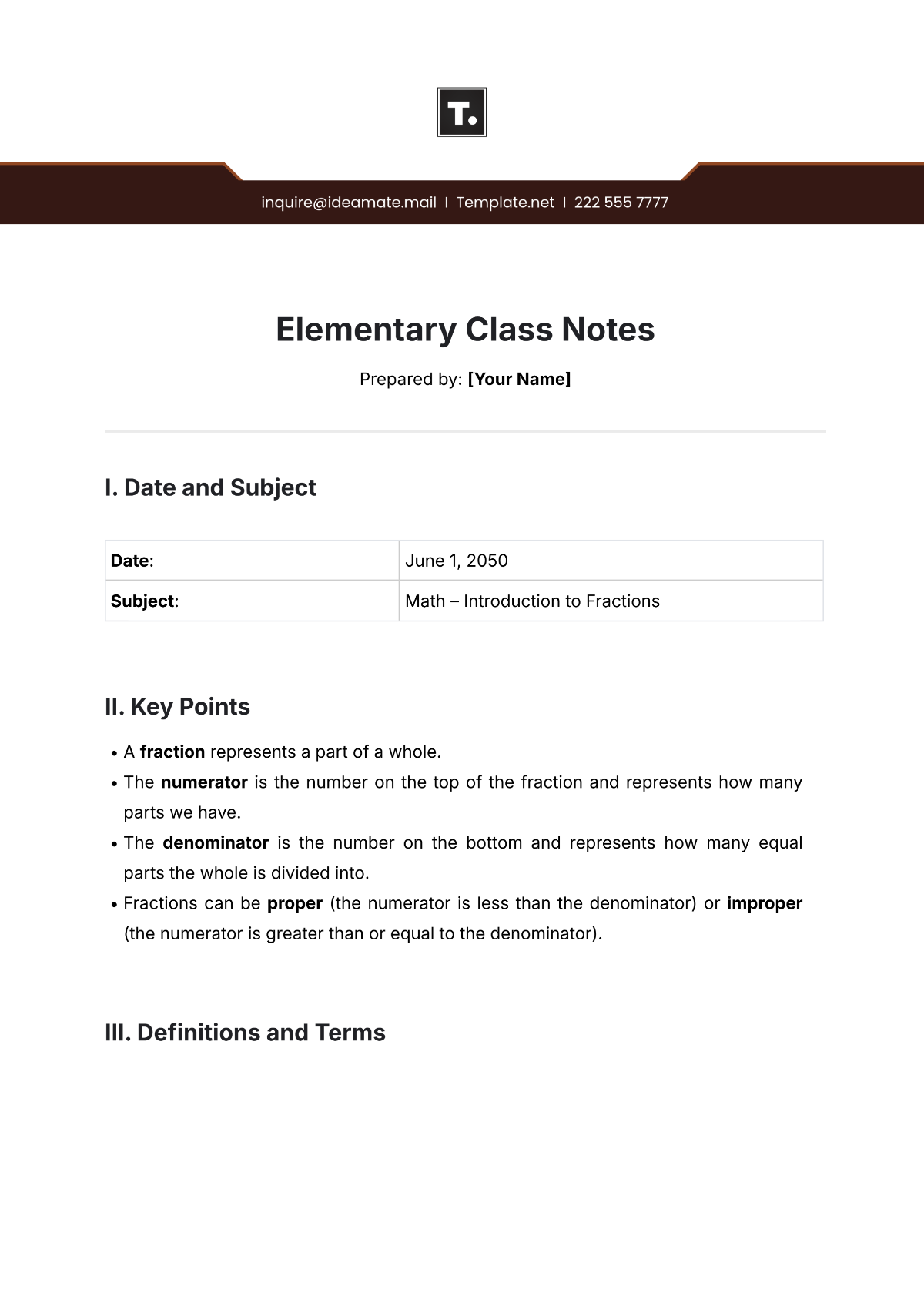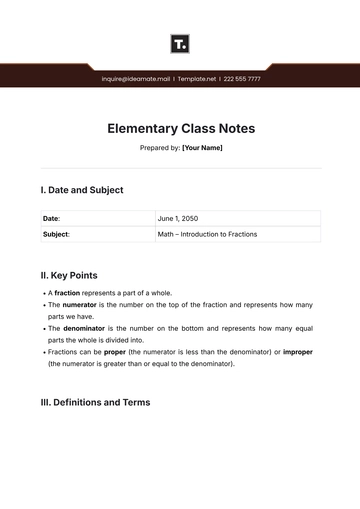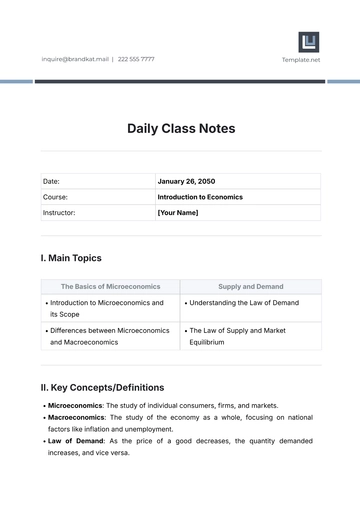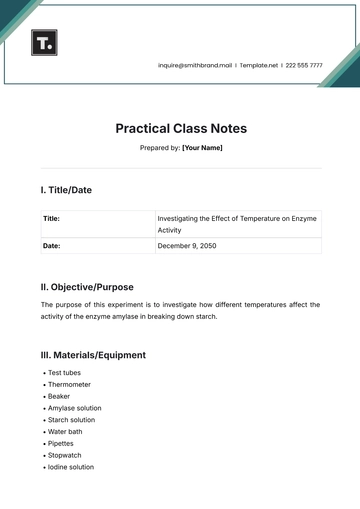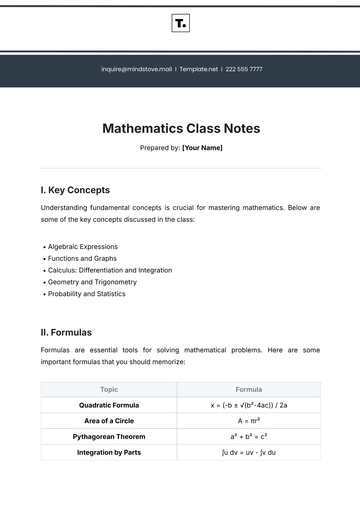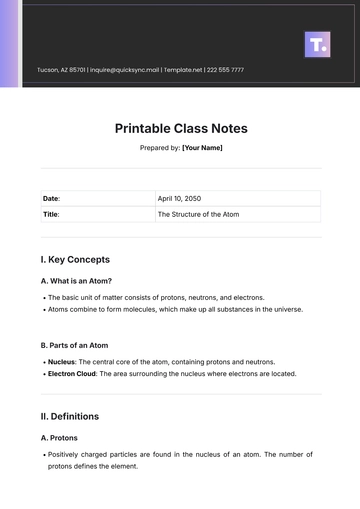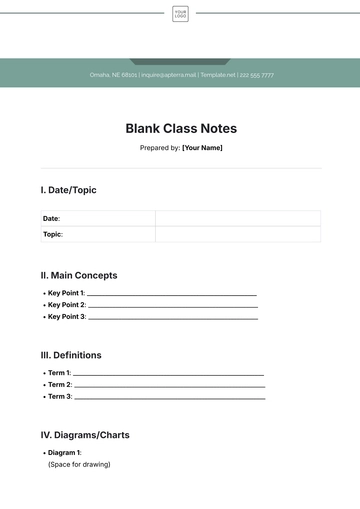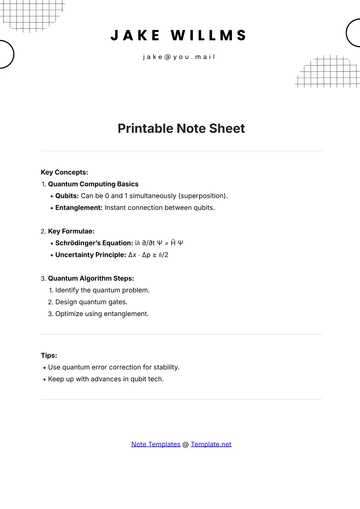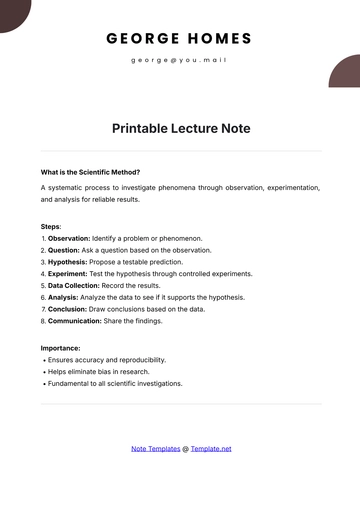Elementary Class Notes
Prepared by: [Your Name]
I. Date and Subject
Date: | June 1, 2050 |
Subject: | Math – Introduction to Fractions |
II. Key Points
A fraction represents a part of a whole.
The numerator is the number on the top of the fraction and represents how many parts we have.
The denominator is the number on the bottom and represents how many equal parts the whole is divided into.
Fractions can be proper (the numerator is less than the denominator) or improper (the numerator is greater than or equal to the denominator).
III. Definitions and Terms
Fraction: A number that expresses a part of a whole or a division of a whole.
Numerator: The top number in a fraction indicates how many parts we have.
Denominator: The bottom number in a fraction indicates the total number of equal parts the whole is divided into.
Proper Fraction: A fraction where the numerator is smaller than the denominator (e.g., 1/2, 3/4).
Improper Fraction: A fraction where the numerator is greater than or equal to the denominator (e.g., 5/4, 7/7).
IV. Examples
1/2: Proper fraction, 1 part out of 2 equal parts.
3/4: Proper fraction, 3 parts out of 4 equal parts.
5/4: Improper fraction, 5 parts out of 4 equal parts.
V. Questions and Answers
Question | Answer |
What is the denominator in the fraction 3/5?
| The denominator is 5, which means the whole is divided into 5 equal parts. |
Is 4/3 a proper or improper fraction?
| It is an improper fraction because the numerator (4) is greater than the denominator (3). |
VI. Homework or Assignments
VII. Teacher’s Notes
Remember, fractions are used to represent parts of a whole.
For homework, focus on writing fractions based on everyday objects (e.g., 1/4 of a pizza).
Note Templates @ Template.net
